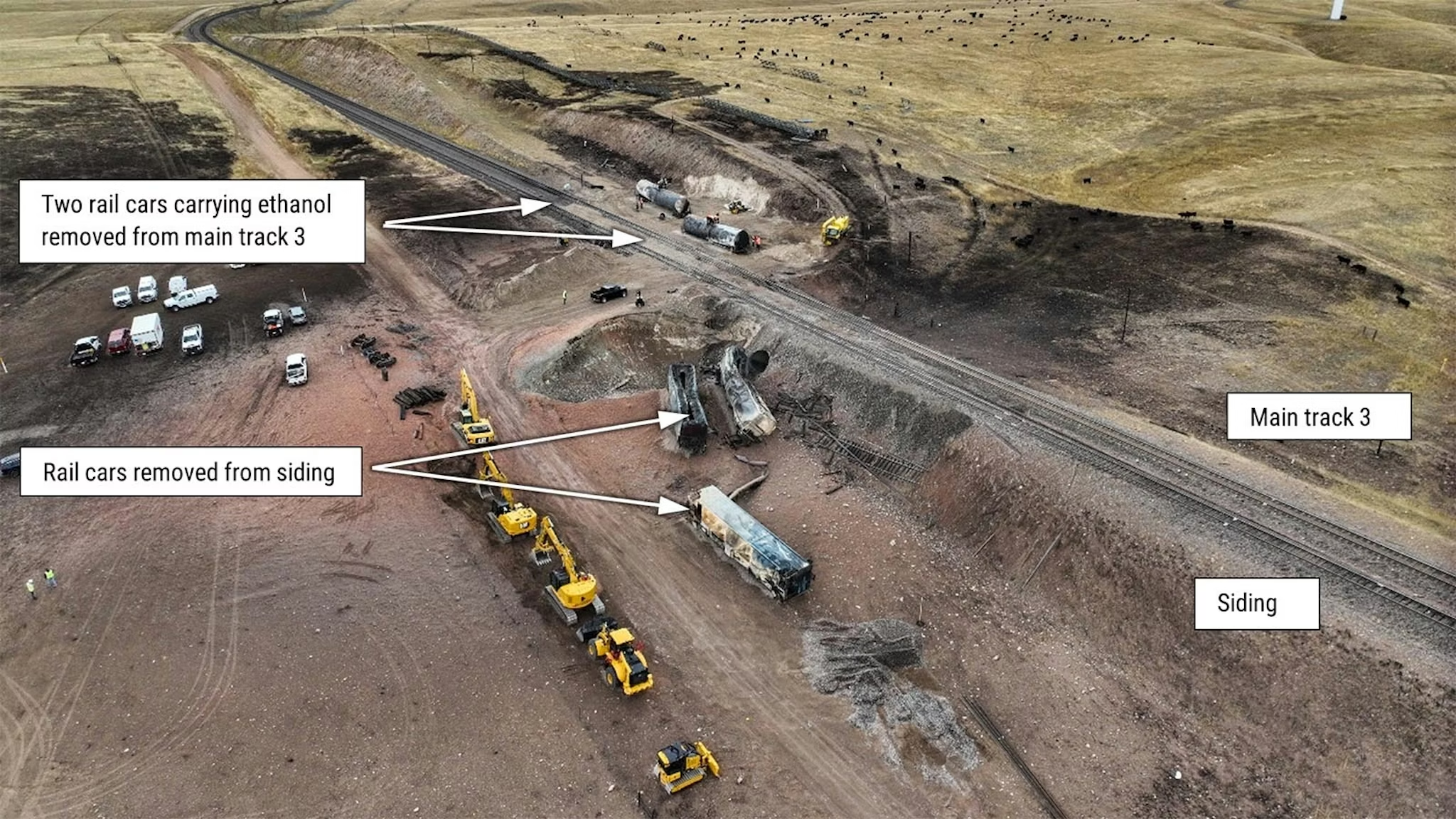Federal Report Recounts Chaos as Wyoming Pipeline Blast Engulfed Passing Train

The original story by Scott Schwebke for Cowboy State Daily.
A new federal report lays out, in stark detail, what happened the night a natural gas pipeline ruptured west of Cheyenne, sending a fireball into the sky and forcing a Union Pacific train crew to escape on foot.
The National Transportation Safety Board (NTSB) released a preliminary report on the Sept. 20 incident, when a Kinder Morgan transmission line failed near milepost 534, right where it crosses Union Pacific’s tracks. The blast lit up the night so brightly it was seen as far away as northern Colorado.
According to the report, the trouble started at 11:07 p.m., when Kinder Morgan’s control system detected a pressure drop on a 22-inch underground natural gas pipeline. Controllers began contacting compressor stations at 11:40 p.m. to figure out what was going on.
Roughly an hour and a half later, a westbound Union Pacific train rolled into the danger zone on main track 3.
The crew — an engineer and a conductor — told investigators they noticed what looked like dust or a vapor cloud near the track. Moments later:
“The crew noticed a fire behind the third locomotive and the train’s engines unexpectedly shut down,” the report states.
The pipeline had ruptured next to the tracks, releasing gas that ignited just as the train passed. The train did not derail, but it was close enough to be hit by the blast. The crew brought the train to a stop and escaped on foot, uninjured.
When emergency crews arrived, they found a massive train:
- 5 locomotives;
- 227 railcars;
- 70 of those cars empty;
- 157 loaded, including 57 cars with hazardous materials;
- 35 cars carrying highly flammable alcohol products (ethanol).
The intense heat from the gas fire caused two ethanol tank cars to start venting through safety pressure relief valves — a built-in emergency response to prevent explosions.
A Kinder Morgan technician closed two mainline valves, isolating the ruptured section of pipe to shut off the gas flow.
The blast drew a huge response from firefighters and law enforcement.
Crews from Laramie County Fire District No. 10 rushed to the scene after reports of explosions and flames visible from up to 60 miles away.
“You could see the glow from town (Cheyenne) as we responded, and we had reports from Colorado that they could see it,” firefighter Daniel Streetman said.
Dispatchers in Larimer County, Colorado, even called in after residents in Wellington reported the massive glow.
Local resident Brendan John said he woke up after getting an alert on his security camera — expecting a bear, not a firestorm.
“Instead, I see what looked like another sun rising,” he said. “The size of the fire was absolutely insane… I’m glad everybody on the train got out safe.”
The NTSB’s preliminary report does not yet pinpoint the cause of the pipeline failure. The agency says the breach and explosion remain under investigation.
Union Pacific is cooperating with federal and local investigators, company spokesman Mike Jaixen confirmed. Kinder Morgan has been barred from commenting publicly while the NTSB investigation is active, spokesperson Taylor Smith said.
At the scene, investigators:
- Reviewed Kinder Morgan procedures and train crew records;
- Collected physical evidence from the track and surrounding area;
- Analyzed locomotive video and drone footage;
- Interviewed train crew and responders.
The spectacular fireball may be out, but the questions it raised about pipeline safety and rail traffic near critical infrastructure are just beginning to be answered.









The latest news in your social feeds
Subscribe to our social media platforms to stay tuned